Don't miss tonight's Spocktacular edition of Science Fiction Theater! Starts at 7PM Pacific. Also featuring the last appearance of Chet Huntley on the Huntley/Brinkley Report!

by Gideon Marcus
Paine-ful exit
The proverbial rats are leaving the sinking ship. Not too long ago, a clutch of NASA scientists departed America's space agency, citing too much emphasis on engineering and propaganda. Now, Thomas O. Paine, who took NASA's reins from its second adminstrator, Jim Webb, has announced his resignation. He leaves the agency on September 15. He lasted less than two years; contrast with Webb, who was there seven and a half.

Paine did not characterize his departure as any indication of disagreement with the agency's current direction. He said he was leaving NASA in strong shape, and that this was the most appropriate time for his departure. He's going back to a management position with General Electrics.
But Paine cannot be very happy with how things have been going lately. NASA's work force has been gutted–from 190,000 to 140,000 personnel; the last Saturn V first stage will be completed next month; and the future of Apollo's successor, the Space Shuttle, is in doubt. The poor director has watched the space agency go from the pinnacle of human achievement to a nadir unseen since the late '50s. If only we'd adopted the Agnew "Mars Plan"…
Deputy Administator George M. Low will take Paine's place for the time being. A replacement has not yet been tapped. Stay tuned!
Painful effort
If Paine left willingly, Analog editor John Campbell, on the other hand, seems determined not to let his magazine go until he does. Which is sad because this month's issue is yet another indication of how far the once-proud property has fallen in quality."Two astronauts meet one another between a large satelite.
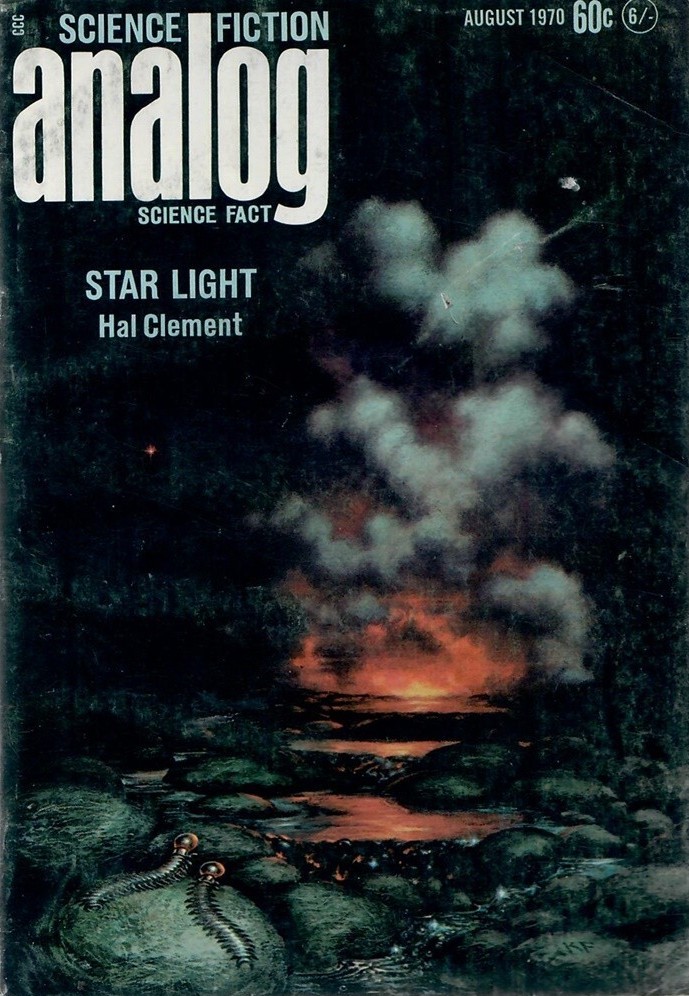
Cover by Kelly Freas
Star Light (Part 3 of 4), by Hal Clement
We return to the super-Jupiter/midget-sun world of Dhrawn, where Captain Dondragmer of the Kwembly is desperately trying to break his land-cruiser free of the ammonia-ice mixture which has frozen it in its tracks. Meanwhile, the plan to use the previously "lost" cruiser Esket as a secondary base for the Mesklinites is compromised: for the past months, its crew had stayed out of sight of the viewscreens to convince the humans that they had abandoned ship, but some clumsy fool has let a piece of equipment roll past the cameras. Moreover, one of the Esket's crew has been careless enough to meet one of the Kwembly's ground parties, and he is recognized by one of the remotely monitoring humans.
And if that's not enough, a second flood is threatening to capsize the Kwembly.
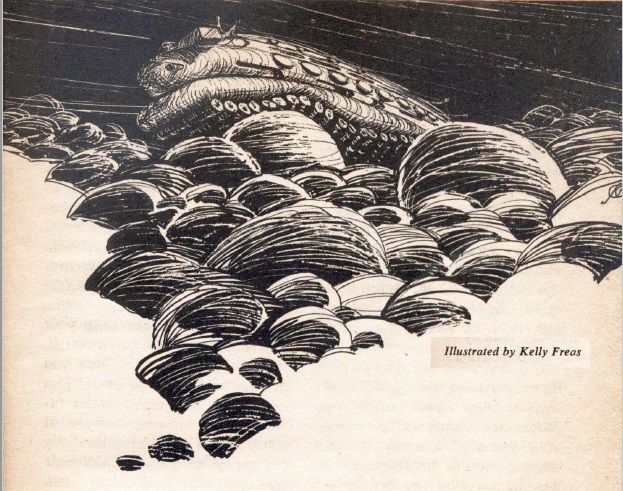
Illustration by Kelly Freas
If anything, this installment is an even duller read than the prior two. Clement's viewpoint is not so much 3rd person as "hover slightly behind 3rd person with a telepathic thought transcriber programmed for 'boring'". Beyond this, I'm now having trouble buying Dhrawn as a plausible world as the premises on which Clement conceived it are quickly becoming obsolete. Let me explain:
As I put forward in reviewing the first installment, for decades, astronomers believed that gas giants had some kind of surface underneath their thick atmospheres. Well, that may not be the case. As I've been reading lately (most recently in this month's National Geographic piece on the Solar System), there may be no "bottom" to Jupiter's atmosphere. Instead, the hydrogen that makes up the bulk of the air on that giant world is just subject to increasing pressure the further down one goes. Eventually, the crush of gravity is so great that the hydrogen becomes a liquid.
The transition is gradual, so there's no way there can be any kind of surface. While I could envision some sort of life evolving in the clouds, equivalent to terrestrial sea life, the ground-crawling Mesklinites seem right out as a concept. I imagine Clement wrote this sequel to Mission of Gravity without being completely caught up on astronomy news.
So, two stars and declining.
Meet a Crazy Lady Week, by W. Macfarlane
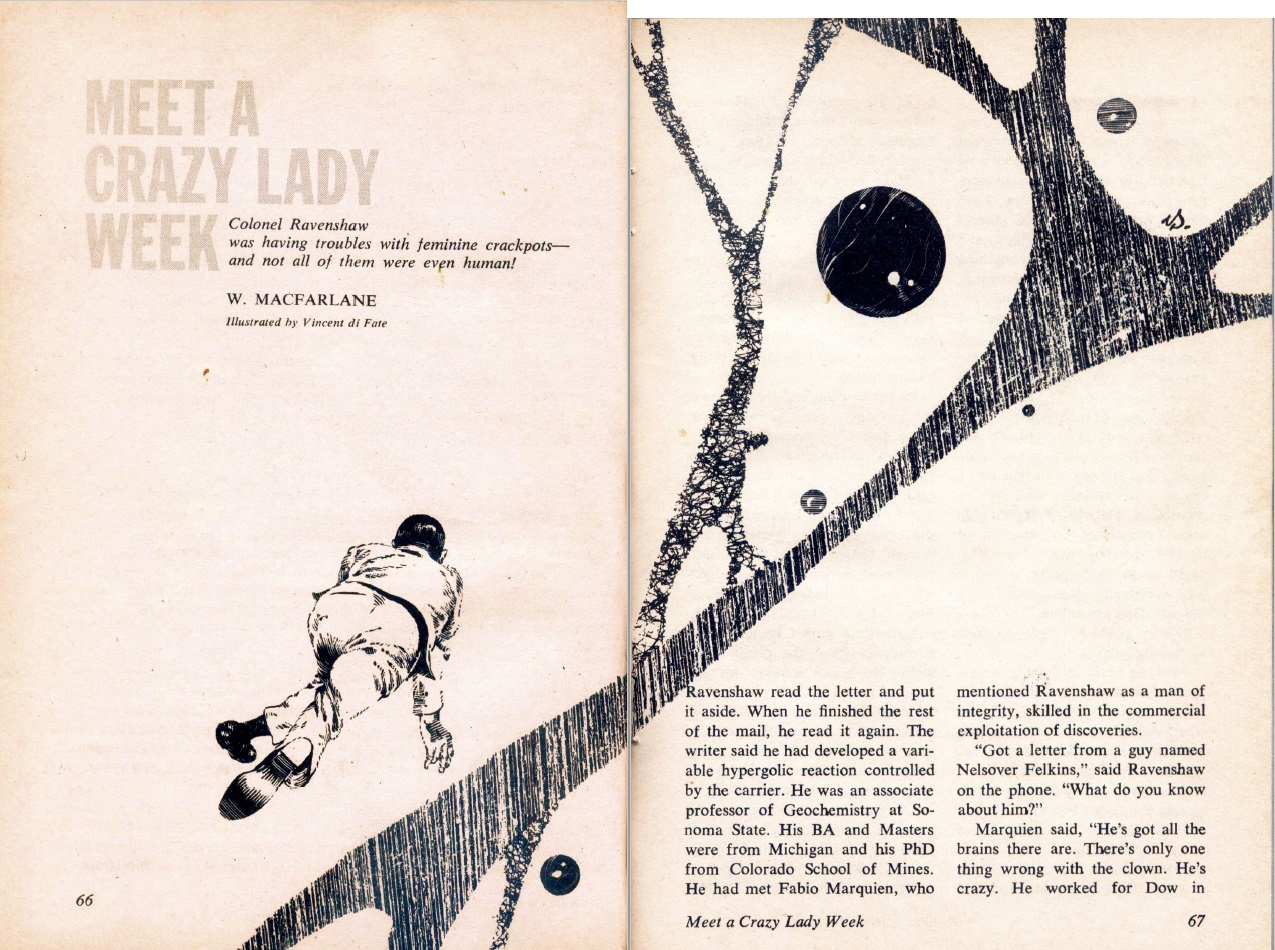
Illustration by Vincent di Fate
We return to the adventures of Arleigh Ravenshaw, field agent for Wild Blue Yonder, a San Diego-based firm that solicits correspondence from kook inventors ostensibly in the hopes of discovering a worthwhile invention. It really is the front for a government agency investigating alien artifacts that give evidence of a myriad of parallel universes.
This particular outing is well nigh incomprehensible, involving an eccentric melted in acid by another eccentric, an electrical appliance repair shop that fixes items by installing alien heating elements in them, and an otherwise empty "other Earth" under the control of a somewhat neurotic computer scout. There is also a bit of unconsumated chemistry between Arleigh and his slightly amnesiac (see the prior installment) assistant, Nell.
Aside from the incorporation of familiar local geography (I live in Vista, a San Diego suburb), there's not much to enjoy in this tale.
Two stars.
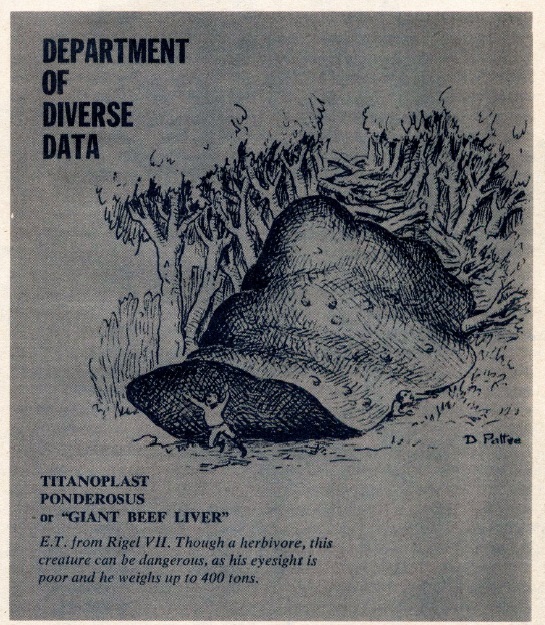
Illustration by David Pattee
Backpack Spacecraft, by Walter B. Hendrickson, Jr.
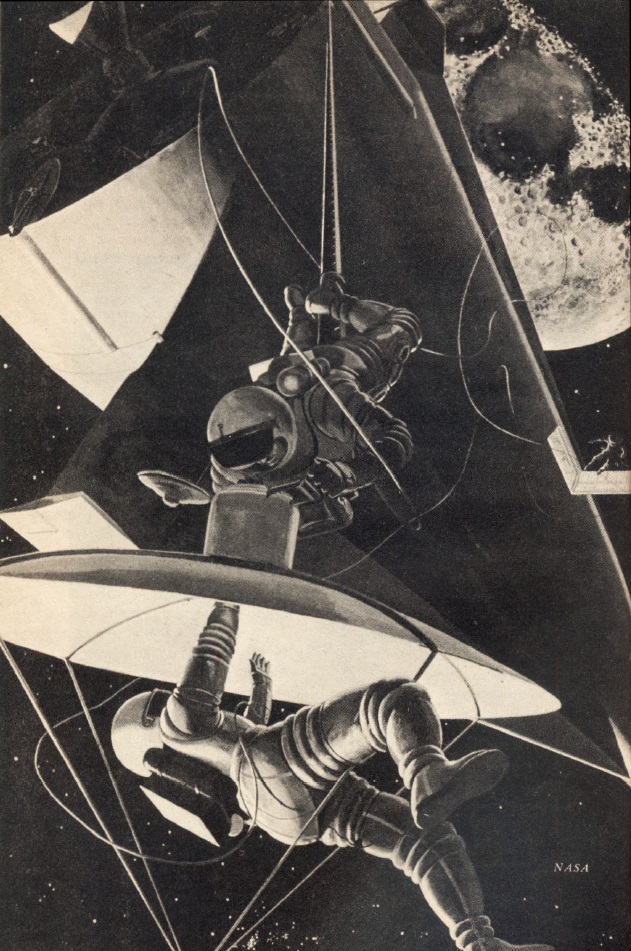
Here's a nifty piece on the Astronaut Maneuvering Unit (AMU)—the backpack that was supposed to turn Gemini spacesuits into personal space ships—and how it evolved into the Extravehicular Maneuvering Unit, which provided oxygen and temperature control for the Moon walkers. There's also a bit on the Air Force's "jet boots", which are supposed to be the next iteration of the concept.
It's very comprehensive, yet still pretty readable. I learned a lot, and this is supposed to be my forte.
Four stars.
Heavy Thinker, by Howard L. Myers
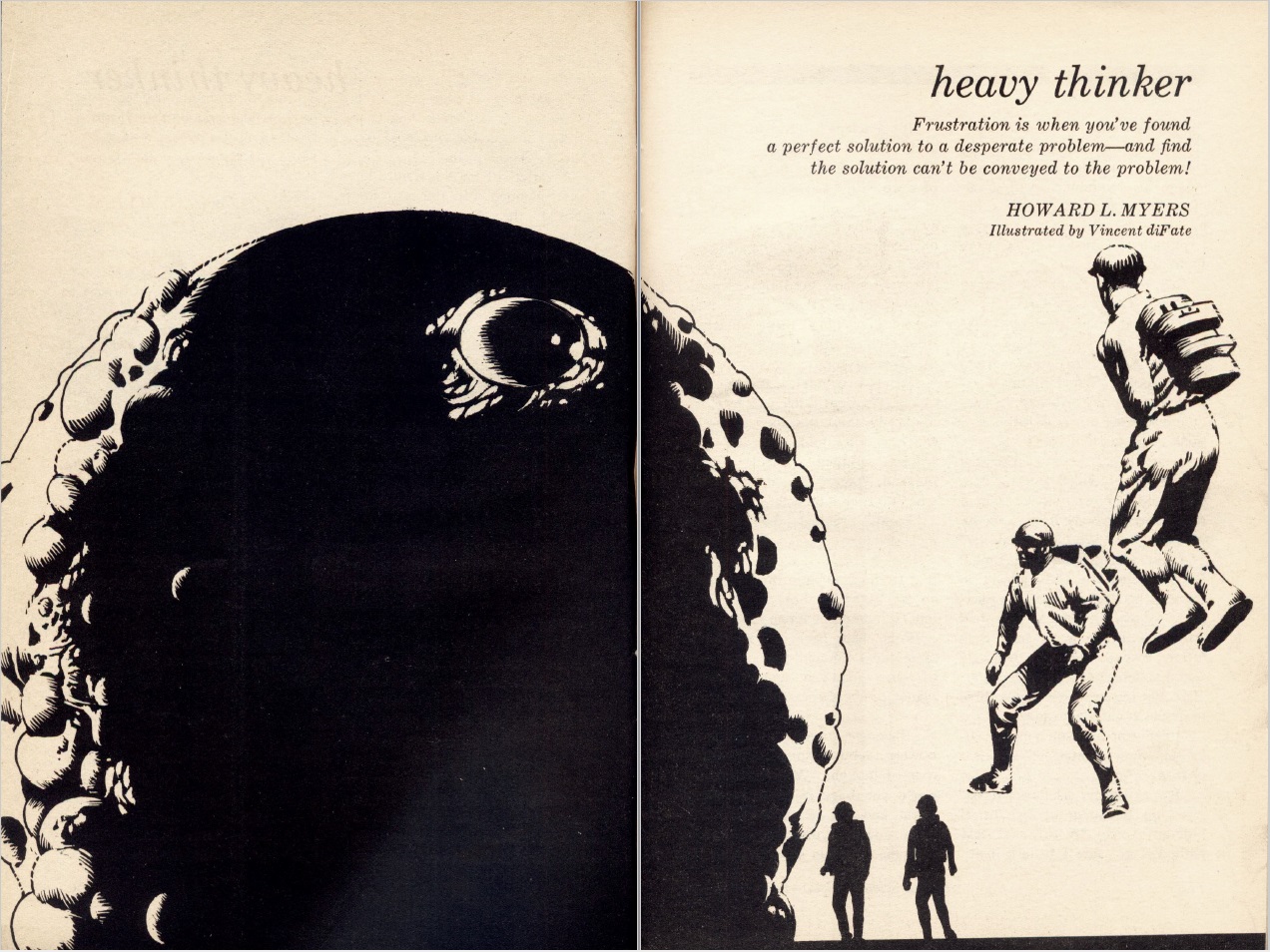
Illustration by Vincent di Fate
A human scout team comes across a planet with an extremely orderly ecosystem. Turns out it's all under the telepathic control of a friendly, mountainous being, nicknamed Monte. The alien facilitates telepathy between the team members, and the group's leader determines that mind-to-mind contact might be just the edge their nation needs to beat the bad guys in the ongoing "econo-war". The problem is, the mountain is too big to be brought to the human capital…
I'm sure you can figure out the solution, and the conclusory pun.
Strictly mediocre, particularly due to bits like the one-page passage explaining how people no longer use space ships but personal bio-suits; a sentence or two would have sufficed. Still, I kind of liked the characterization of the boulder-ET, and the innocence of the tale is refreshingly charming.
Three stars.
Excelsior!, by Robert Chilson
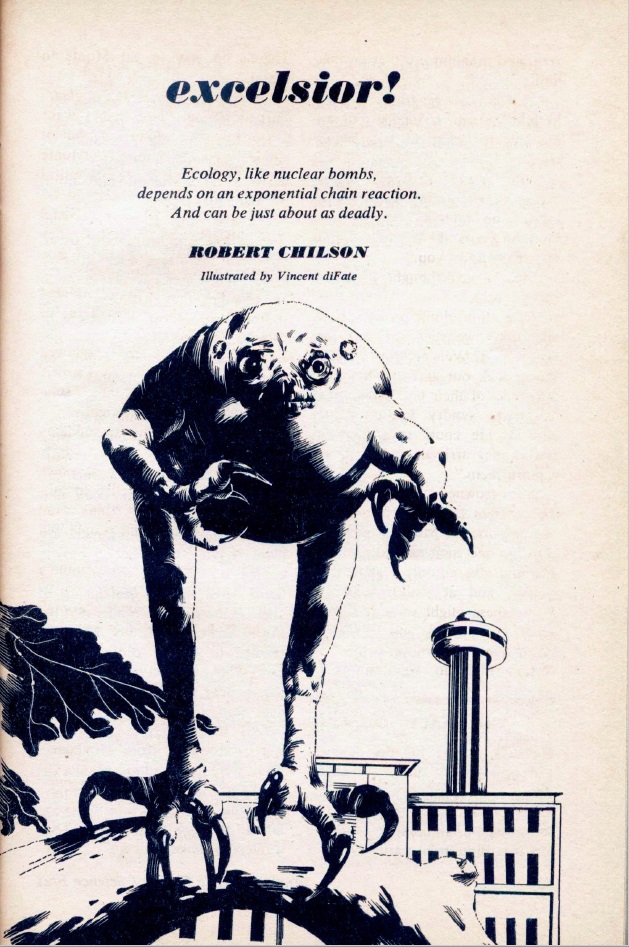
Illustration by Vincent di Fate
Arthur Ingram, in his last quarter of life, is out for a nature stroll on a long-colonized world. While hiking through one of the last of the planet's remaining forests, he encounters more and more ommas—normally furtive native creatures. They are being curiously bold, and when Ingram stumbles across their den, he is swarmed, barely making it out alive.
The story is a cautionary tale on the disruption of environments through the importation of foreign species, and what dangers can result when indigenous fauna are put under stress, pushed out of their natural habitats.
As a person living in the increasingly settled suburbs of San Diego, I see this happening here, too. Coyotes, owls, rabbits, and other wildlife are being concentrated in our neighborhood—an island of natural preserve in developing area. I imagine this phenomenon will only worsen as time goes on.
So, three stars.
Brillo, by Ben Bova and Harlan Ellison
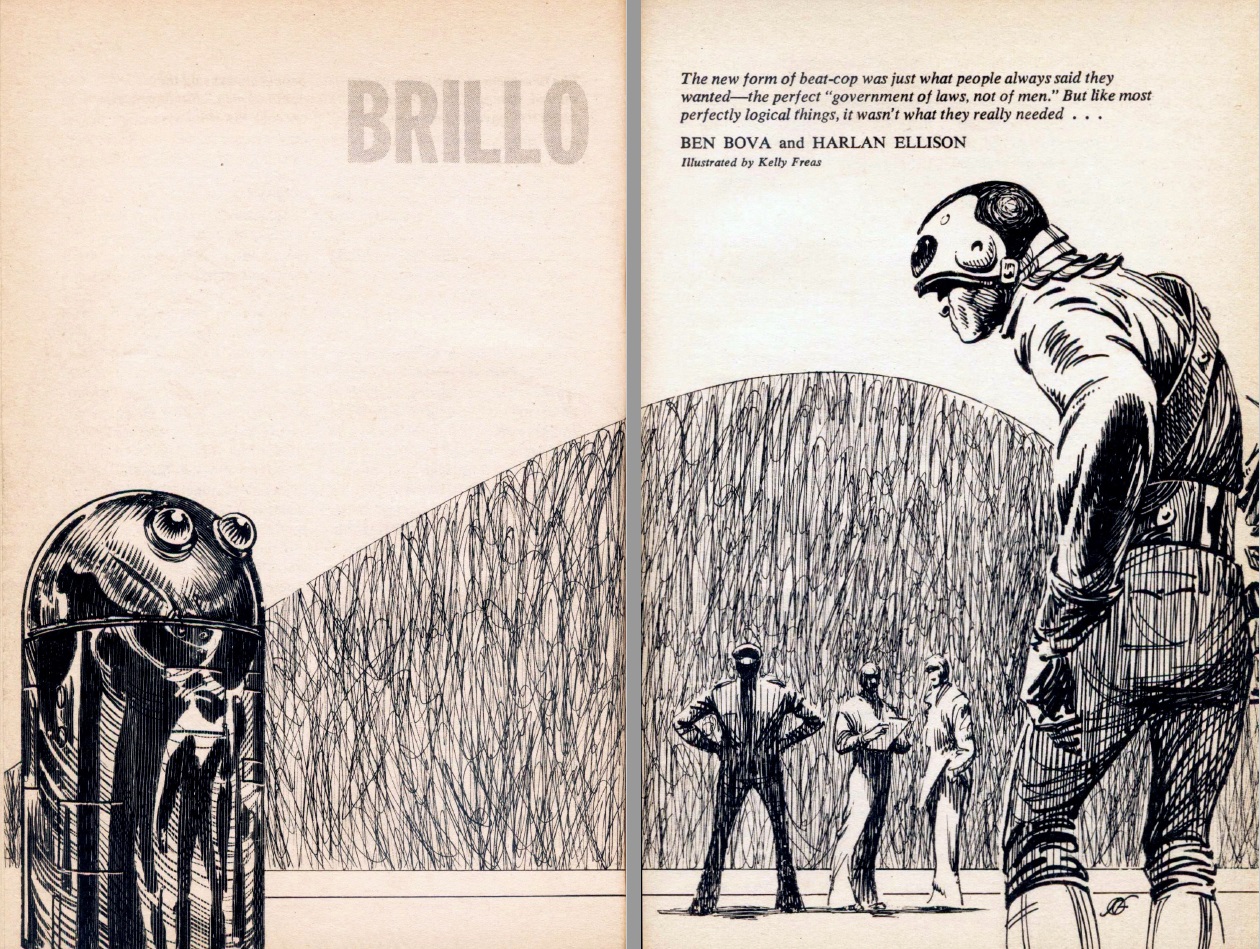
Illustration by Kelly Freas
Brillo, the robot cop, is sent on a walking beat in Manhattan with veteran Officer Mike Rudnik. The human policeman finds all his instincts befuddled by his mechanical sidekick, who is a stickler for the rules and has no sense of finesse. The results are less than satisfactory. The moral of the story: never send a machine to do a man's job…at least, until the machine is good enough. Then watch out!
I'm not sure which parts of the story are Bova's; surely the lurid, repetitive descriptions are likely Ellison's. They have his flavor. The Twilight Zoney ending is rather superfluous…or maybe the point of it all. You tell me.
A high three stars. Almost four. Surely the best fiction in the issue…which ain't hard.
The Reference Library: (Analog, August 1970), by P. Schuyler Miller
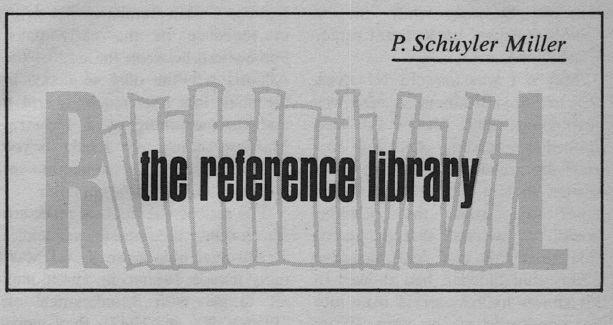
There's a fifth book in the travels of Lemuel Gulliver, this one a modern pastiche called A New Voyage to the Country of the Houyhnhnms by Matthew Hodgart. It takes jabs at our modern society and counter-culture, all with a fair approximation of the Swift style.
Other books that crossed Miller's desk: Julius Fast's The League of Grey-Eyed Women, which he seemed to like a tad more than David, Bob Shaw's Shadow of Heaven, which he enjoyed more than I did, an Ellison collection called The Beast That Shouted Love at the Heart of the World, which he describes as "the world Harlan sees around him…the universe he shows us."
Other titles include Harrison's Captive Universe, which Schuy definitely liked better than David, Mike Moorcock's novelization of The Ice Schooner, which is superb, Vernor Vinge's Grimm's World, which started so well, but fell on its face in the second half, and a Poul Anderson collection of mediocrities on the theme of institutionalized violence called Seven Conquests.
Miller also offers up a state of Heinlein's books currently in print. There's a lot, which Schuy ascribes to "the Flower Children [having] taken "Stranger in a Strange Land" to their psychedelic hearts and accepted it as the Word of the Guru on love and sex.
Final analysis
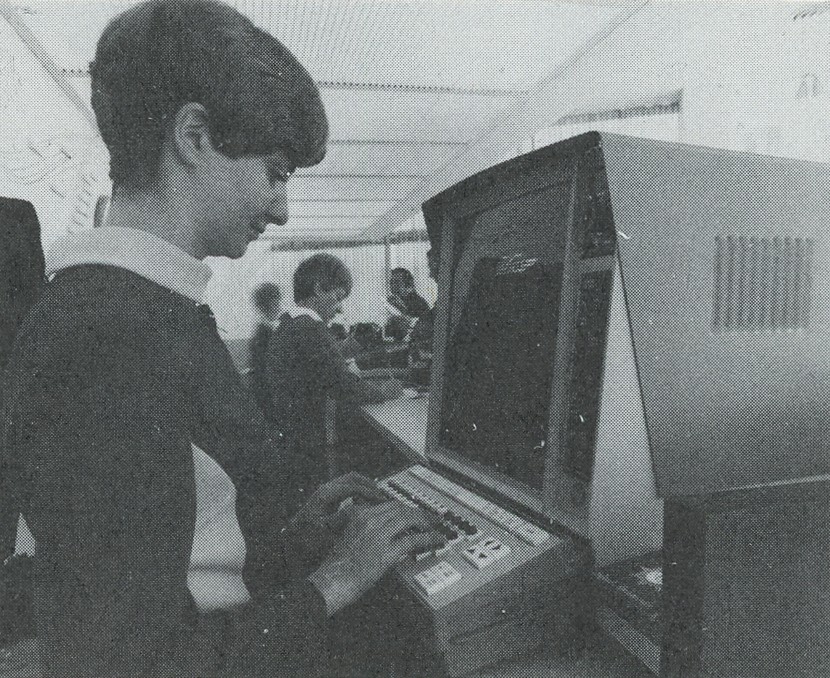
A young woman typing at a Burroughs terminal, logging airline reservations
Our Analog for this month clocks in at just under 2.8 stars, which puts it under Vision of Tomorrow (3.4) and the Soviet fiction anthology Other Worlds, Other Seas (3.1). Even that dismal showing is still better than the slightly worse Fantastic (2.8), and the more worse Galaxy (2.7), Venture (2.6), Orbit 7 (2.6), and Fantasy and Science Fiction (2.5)
What a lousy month! It follows that of the eight mags/anthologies we got this month, you could only fill two…maybe two and a half…with 4 and 5 star stuff. Interestingly, women wrote 12.5% of the new fiction composed this month, and that's even with the Soviet anthology being all stag.
I know I keep beating this drum, but I'm always hoping next month will be better. Maybe all those luminaries gathering in one place (Worldcon in Heidelberg, West Germany) will submit their best work for any editors attending.
We'll see!
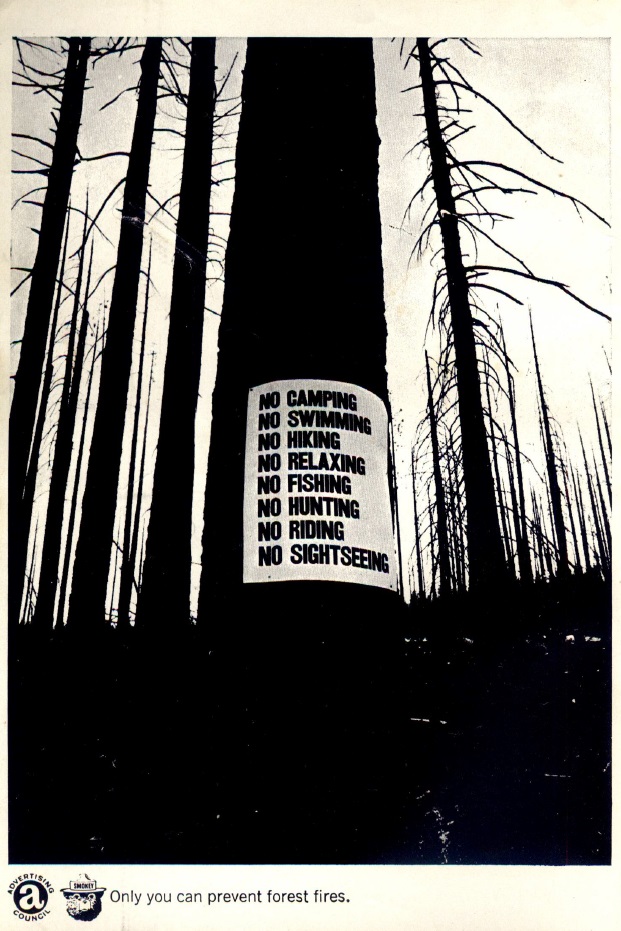
Remember—only you can prevent bad science fiction…by writing good science fiction!
[New to the Journey? Read this for a brief introduction!]

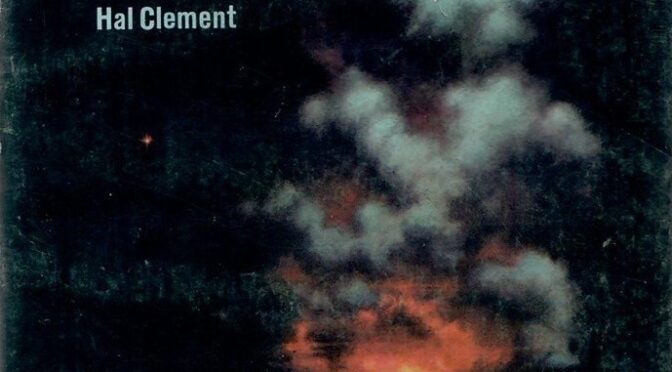
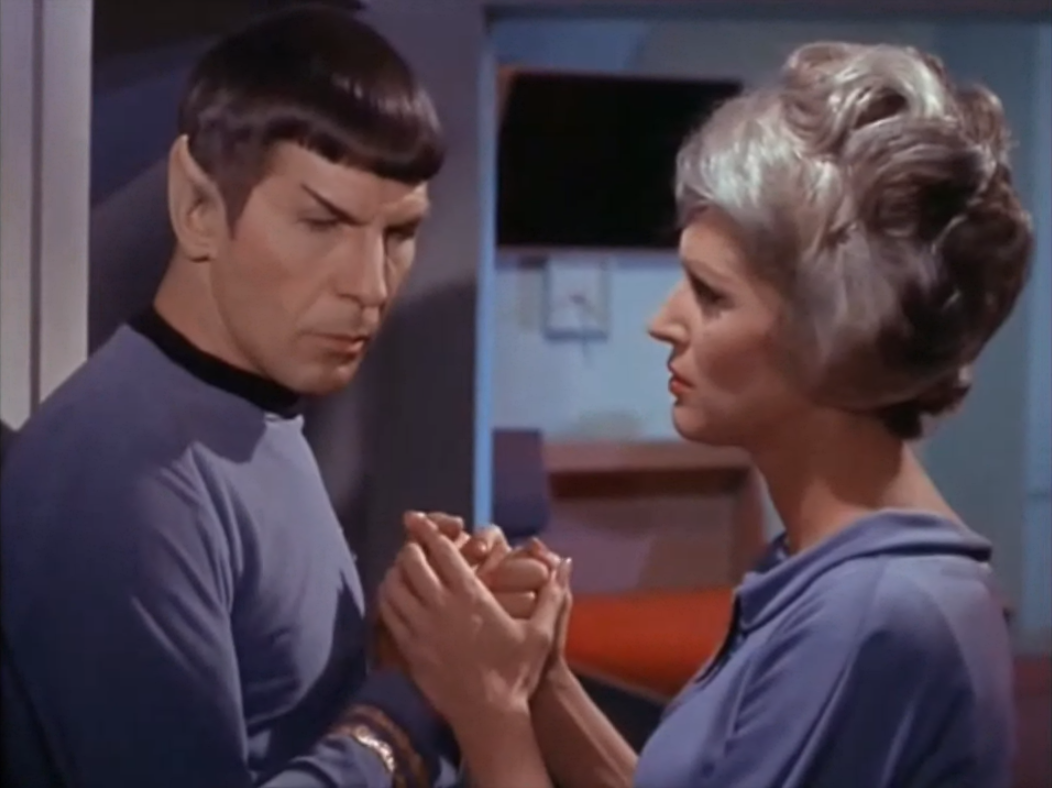


I continue to like "Star Light" better than you do, but then I think I like Clement in general more than you do. This sort of super-heavy planet may no longer pass scientific muster, but much of the story tickles the part of my brain that thinks phase diagrams are interesting. That said, Hal could stand to pick up the pace, as this installment mostly goes back over old ground.
The printer seems to have screwed up and dropped most of your review of "Meet a Crazy Lady Week," but it's a stupid story. It's probably even stupider than the stupid story it's a sequel to.
The fact article was, indeed, pretty good. Truly outstanding considering it's in Analog. (The printer screwed up here, too. The title is missing. There's also a stray sentence fragment before the picture of the cover. The printer must have been utterly plastered.)
You're kinder to "Heavy Thinker" than I would have been. You saw charm that is completely obscure to me.
On the other hand, you summed up "Excelsior!" nicely. No disagreement there.
"Brillo" certainly could have been better, though it asks interesting questions. A decent editor might have suggested a couple of tweaks that could have gotten it to four stars. Of course, then Harlan would have refused to talk to him for six months.
Anyway, a bad month all around. Call it more data showing that editors don't run their best stuff during the summer for whatever reason.
You got a bad copy. Sorry about that. Rats peed on the layout.
I'll send you a new edition, six cents on me.
Do you know anything about "Brillo"'s provenance?
Just what Campbell says. The plot feels more Bova than Ellison to me (and he gets top billing), but the "metal fuzz" joke sounds all Harlan. Harlan might also know more about that side of the NYPD from when he was writing that book about gangs. But that's all guesswork.